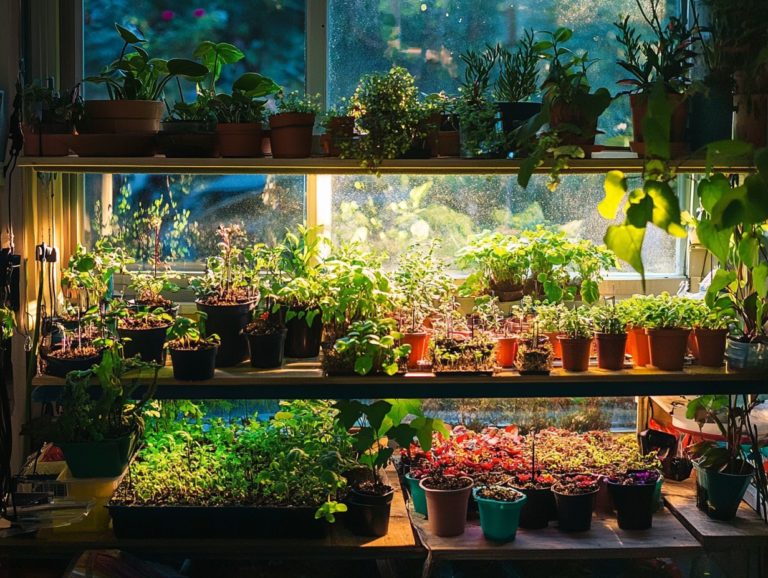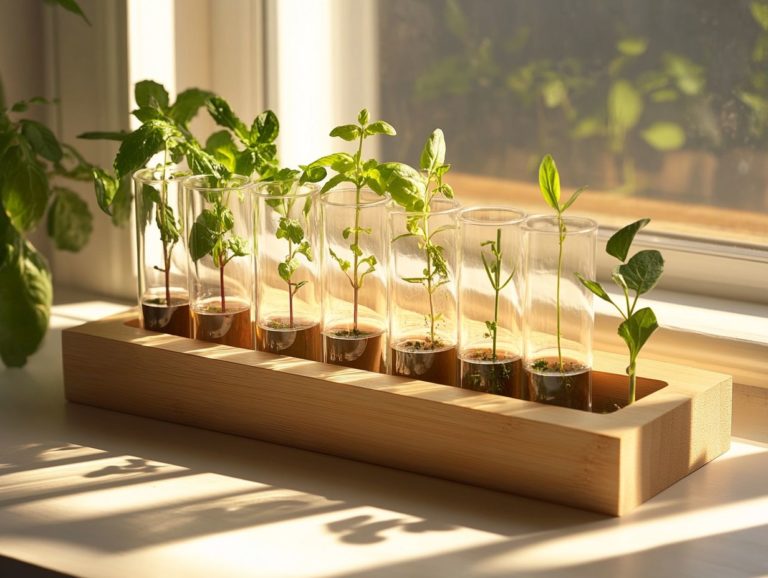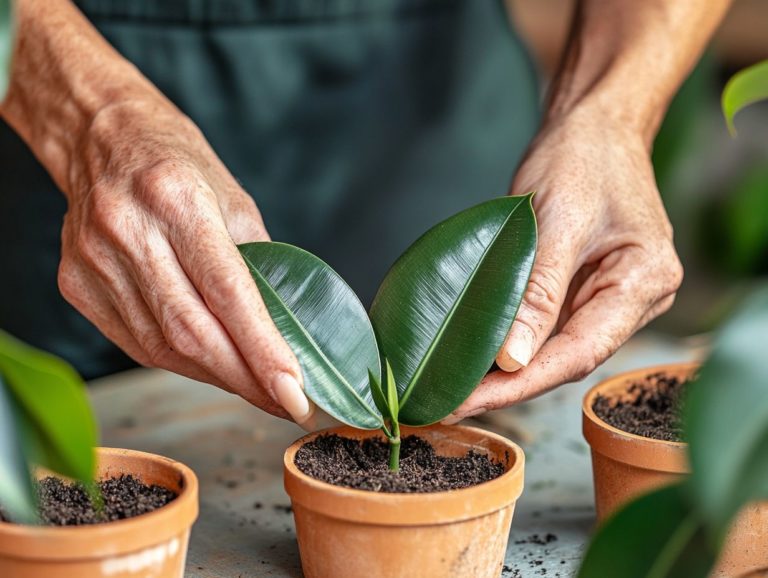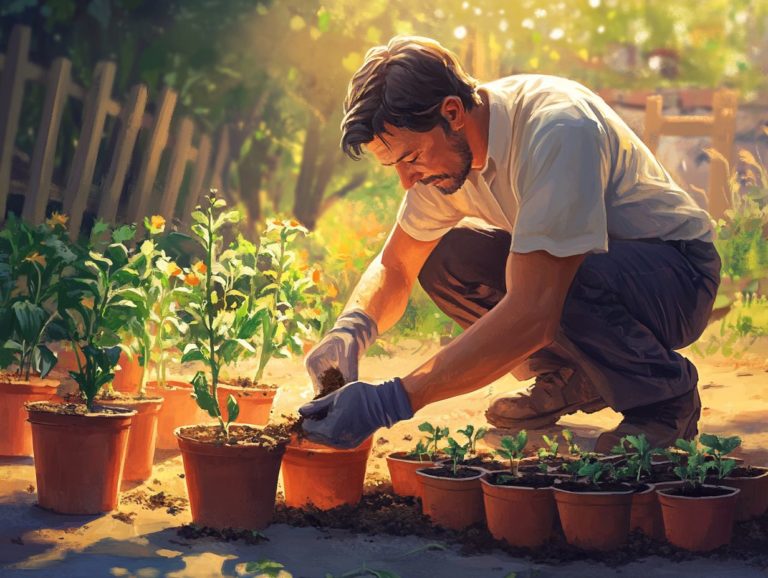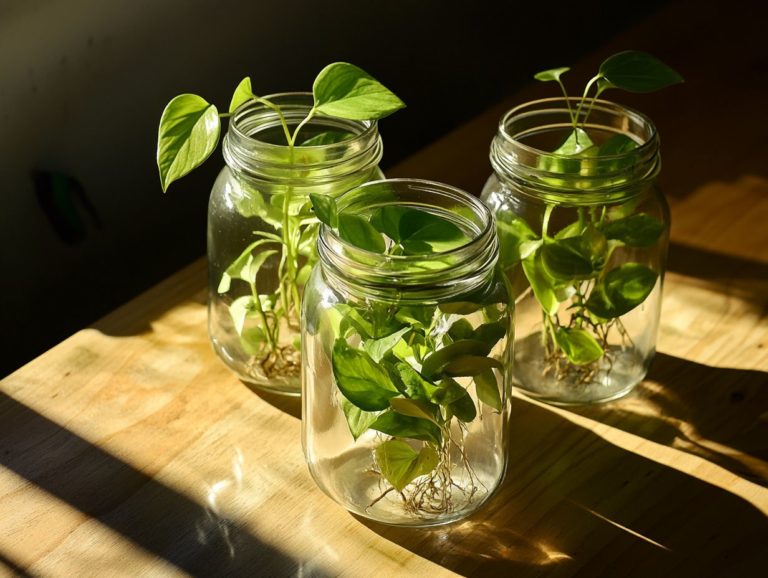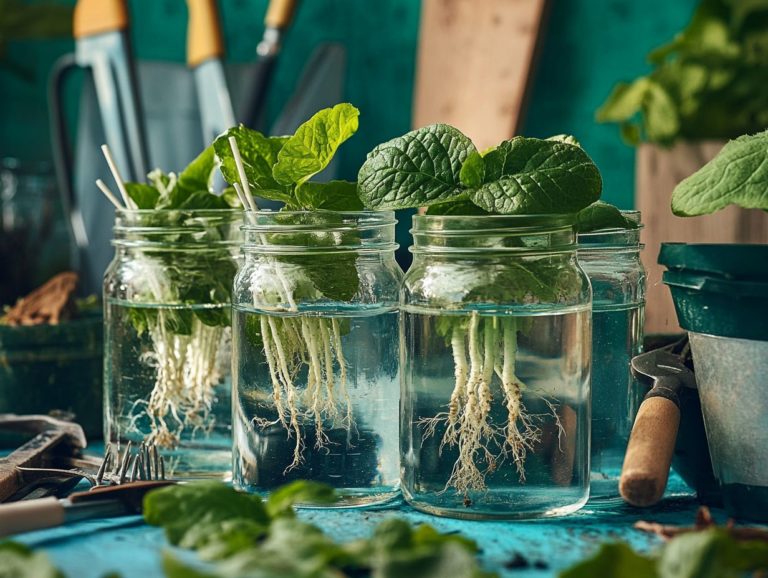The Importance of Sterilizing Tools for Propagation
In the realm of plant propagation, the journey to vibrant, thriving plants begins long before they take root.
Sterilizing your tools is a vital yet frequently overlooked step that can truly transform your efforts. By preventing contamination and fostering healthy growth, effective sterilization techniques protect everything you ve worked for.
This article will delve into what sterilization involves, its importance in the propagation process, various effective methods, and best practices for maintaining a clean and safe environment for your plants.
Whether you re a seasoned gardener or just stepping into the world of propagation, grasping these principles can elevate your success significantly.
Contents
- Key Takeaways:
- Understanding Sterilization for Propagation
- Why Sterilization is Important for Propagation
- Methods of Sterilizing Tools
- When and How Often to Sterilize Tools
- Frequently Asked Questions
- Why is it important to sterilize tools for propagation?
- What are some common methods of sterilizing tools for propagation?
- How often should tools be sterilized for propagation?
- What tools should be sterilized for propagation?
- Can using non-sterilized tools harm the propagated plants?
- Are there any benefits to sterilizing tools for propagation other than preventing diseases?
Key Takeaways:

- Proper sterilization is crucial for successful propagation, as it prevents contamination and ensures healthy growth of new plants.
- Chemical and heat sterilization are common methods used to sanitize tools, but other techniques such as UV light and steam can also be effective.
- Regularly sterilizing tools before and after use is essential, following recommended guidelines and best practices to maintain a clean and safe environment for propagation.
Understanding Sterilization for Propagation
Understanding the importance of sterilization for propagation is essential for ensuring that your plants flourish in a sterile environment, especially when working with species like Geraniums, Calibrachoa, Petunia, and Cannabis.
By implementing rigorous sanitation protocols, you can effectively ward off contamination and disease issues in your rooted cuttings, thereby enhancing your plant propagation techniques.
This knowledge can truly elevate your gardening game and is invaluable for gardeners and plant enthusiasts, including esteemed experts such as Dr. Roger C. Styer from the University of New Hampshire and his colleagues from the University of Maine.
Why Sterilization is Important for Propagation
Sterilization plays a crucial role in plant propagation, as it effectively reduces the risk of various disease issues, including bacterial, fungal, and viral threats that can harm cuttings sourced from nurseries or other growers.
By implementing this essential process, you ensure the health and vitality of your plants, setting a solid foundation for successful growth.
Preventing Contamination
Preventing contamination is vital for ensuring the health of your propagated plants. This involves using effective disinfectants, maintaining a sterile environment, and implementing proper practices by your sticking crew.
This process is essential, as even the tiniest pathogens can jeopardize the growth and overall vitality of your plants. To achieve the highest standards of cleanliness, your sticking crew employs a variety of contamination prevention techniques. They routinely use disinfectants on tools and surfaces, and they strictly adhere to protocols that mandate the use of disposable gloves. This significantly reduces the risk of transferring harmful microorganisms from their hands to the plant material.
By ensuring a sterile environment throughout the propagation stages, you not only protect existing plants but also promote healthier growth, ultimately enhancing the success rates of your propagation efforts.
Ensuring Healthy Growth
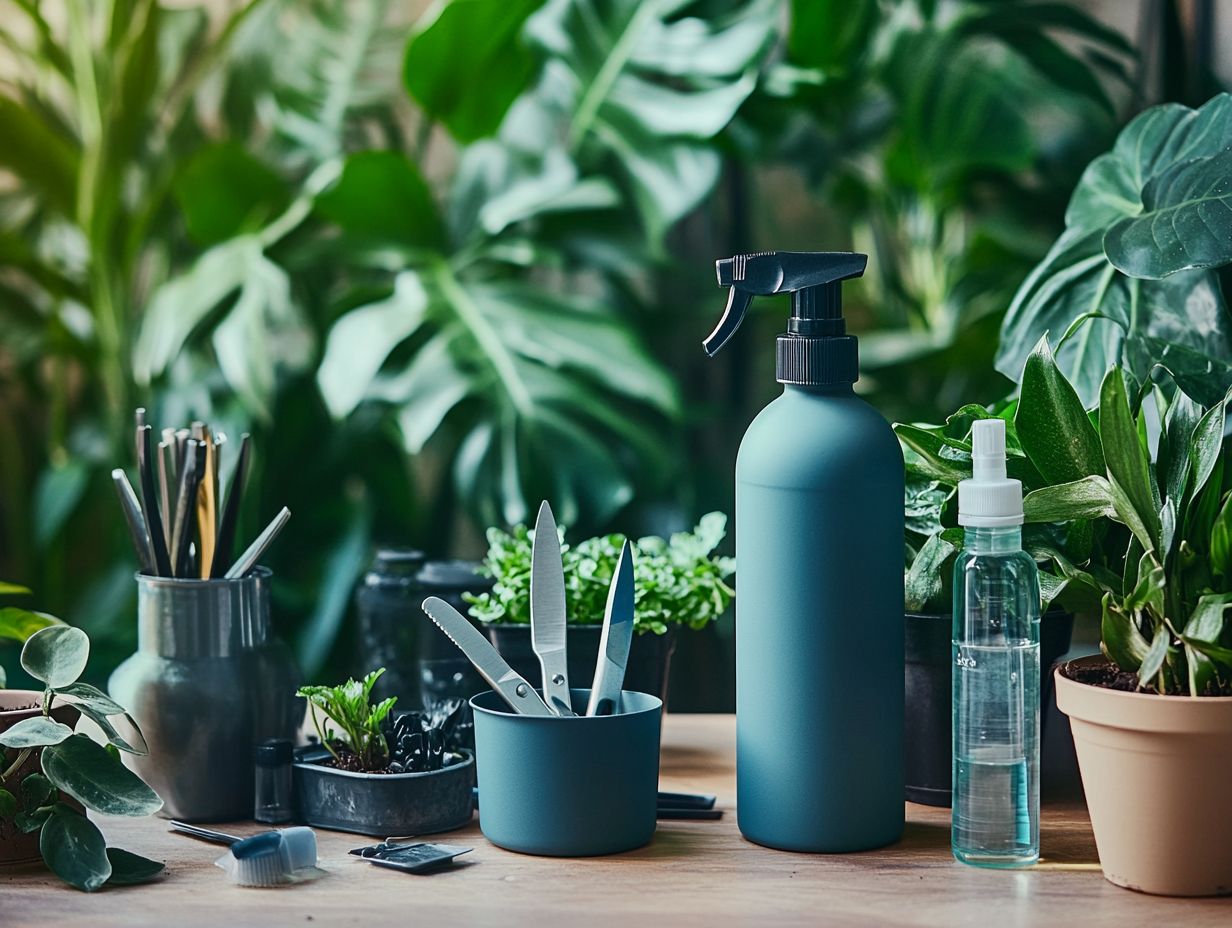
Ensuring healthy growth during plant propagation is crucial, as it directly influences the success of root development and overall plant vigor, especially in techniques like tissue culture.
Tissue culture methods allow you to propagate plants in a controlled environment, which is essential for optimizing growth conditions. You need to carefully regulate key factors such as temperature, humidity, and light intensity to create the ideal atmosphere for cell division and differentiation.
Consistent monitoring for pests or diseases is also vital; these nuisances can dramatically hinder development and reduce viability.
Environmental conditions, including nutrient availability and water levels, play a critical role in shaping healthy specimens. By integrating effective pest management strategies and maintaining optimal environmental parameters, you can ensure robust growth and significantly enhance the overall success of your propagated plants.
Methods of Sterilizing Tools
Effective plant propagation depends on your ability to sterilize tools properly. You can achieve this using various techniques, including chemical and heat sterilization, to create a safe working environment.
Chemical Sterilization
Chemical sterilization uses powerful disinfectants to eliminate pathogens from tools and surfaces. Common choices include chlorine compounds, hydrogen peroxide, and quaternary ammonium compounds.
Each of these disinfectants offers unique benefits. For example, chlorine excels at targeting bacteria and viruses, while hydrogen peroxide effectively eliminates spores. This makes hydrogen peroxide essential in environments focused on plant propagation.
Understanding the effectiveness of these agents is vital for maintaining a sterile workspace and safeguarding the health of propagated plants. By prioritizing these sterilization techniques, you can significantly reduce the risk of contamination, ultimately nurturing robust plant populations and encouraging their growth.
Heat Sterilization
Heat sterilization is one of the most effective methods to eliminate pathogens. It employs high temperatures to ensure your tools are free from harmful bacteria and viruses before plant propagation.
This technique utilizes principles of thermodynamics to eradicate microorganisms. It provides a reliable way to ensure cleanliness in various settings. For instance, autoclaving uses pressurized steam to sterilize equipment, while dry heat methods are ideal for materials sensitive to moisture.
The effectiveness of these processes is crucial for adhering to strict sanitation protocols, especially in laboratory and horticultural contexts. When chemical agents may compromise your sensitive instruments or leave residues, heat sterilization becomes the clear choice. It ensures your tools not only meet safety standards but also retain their integrity over repeated uses.
Other Techniques
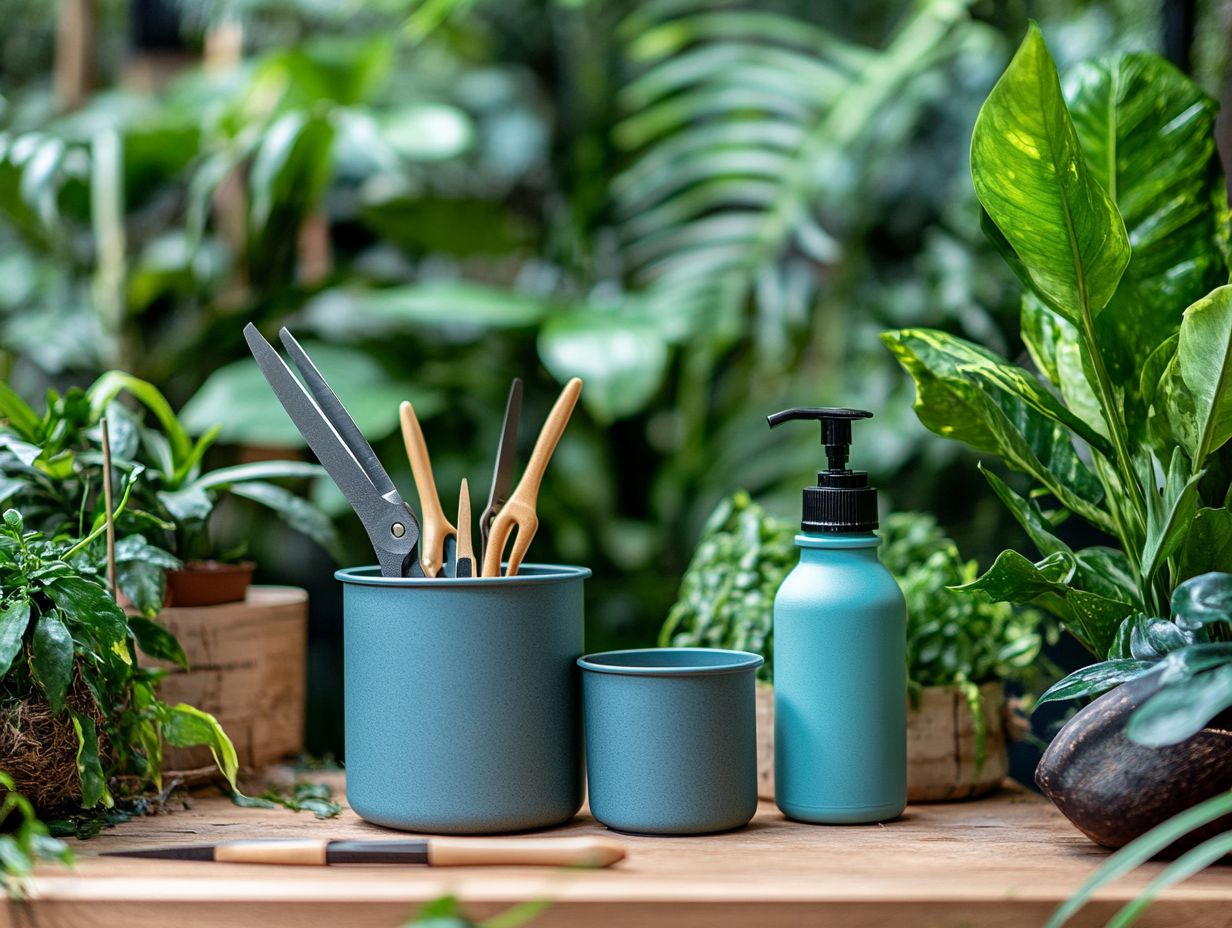
You also have several other sterilization techniques at your disposal for propagating plants. This provides you with the flexibility and adaptability necessary to maintain robust sanitation protocols.
Among these methods, UV light sterilization stands out for its remarkable ability to reduce microbial load on surfaces without harsh chemicals. This makes it particularly well-suited for sensitive environments like greenhouses.
On the other hand, steam sterilization employs high-temperature steam to eliminate pathogens, ensuring thorough disinfection of your tools and soil. When you compare these alternatives, UV light is especially beneficial for immediate surface treatment, while steam sterilization excels at deep penetration.
Each method has unique advantages and applications. For instance, while chemical sterilization may be more economical for large-scale operations, heat methods guarantee complete sterilization without leaving residues that could jeopardize plant health.
When and How Often to Sterilize Tools
Determining when and how often to sterilize your tools is essential in plant propagation. The frequency of sterilization should align with best practices and sanitation protocols. This ensures optimal plant health and successful propagation outcomes.
Prioritizing this aspect of your process can make a crucial difference in achieving thriving plants and robust growth.
Frequency of Sterilization
The frequency of sterilization during your plant propagation efforts can vary significantly based on factors such as the types of plants you re working with and your specific sanitation protocols.
If you re dealing with delicate species, they are more susceptible to pathogens. This means a more rigorous sterilization approach is necessary perhaps even after each use of your tools or containers. Conversely, if you re propagating robust varieties, they can endure less stringent measures, allowing for a more relaxed schedule.
When setting up your sterilization regimen, consider your method of propagation. Techniques like cuttings may require different protocols than seed sowing. To optimize plant health, a proactive approach is vital. Regularly assess both your equipment and environmental conditions, and be ready to adjust the frequency of sterilization based on the health trends you observe. Additionally, familiarize yourself with the tools you need for plant propagation to enhance your success.
Best Practices for Sterilization
Implementing best practices for sterilization is essential to maintaining your plant propagation efforts. This involves strictly adhering to established sanitation protocols and employing effective methods.
Doing so streamlines the propagation process and significantly reduces the risk of disease transmission. Conduct thorough pre-sterilization checks by inspecting all tools and materials for contaminants. For example, use a strong alcohol solution (like 70% ethanol) to effectively reduce harmful pathogens.
After sterilization, handle your tools carefully to avoid recontamination. Using gloves and sanitized containers safeguards your plants. Case studies from nurseries that adopted stringent sanitation protocols show significant improvements in plant health, highlighting the critical role of these practices in successful propagation.
Frequently Asked Questions
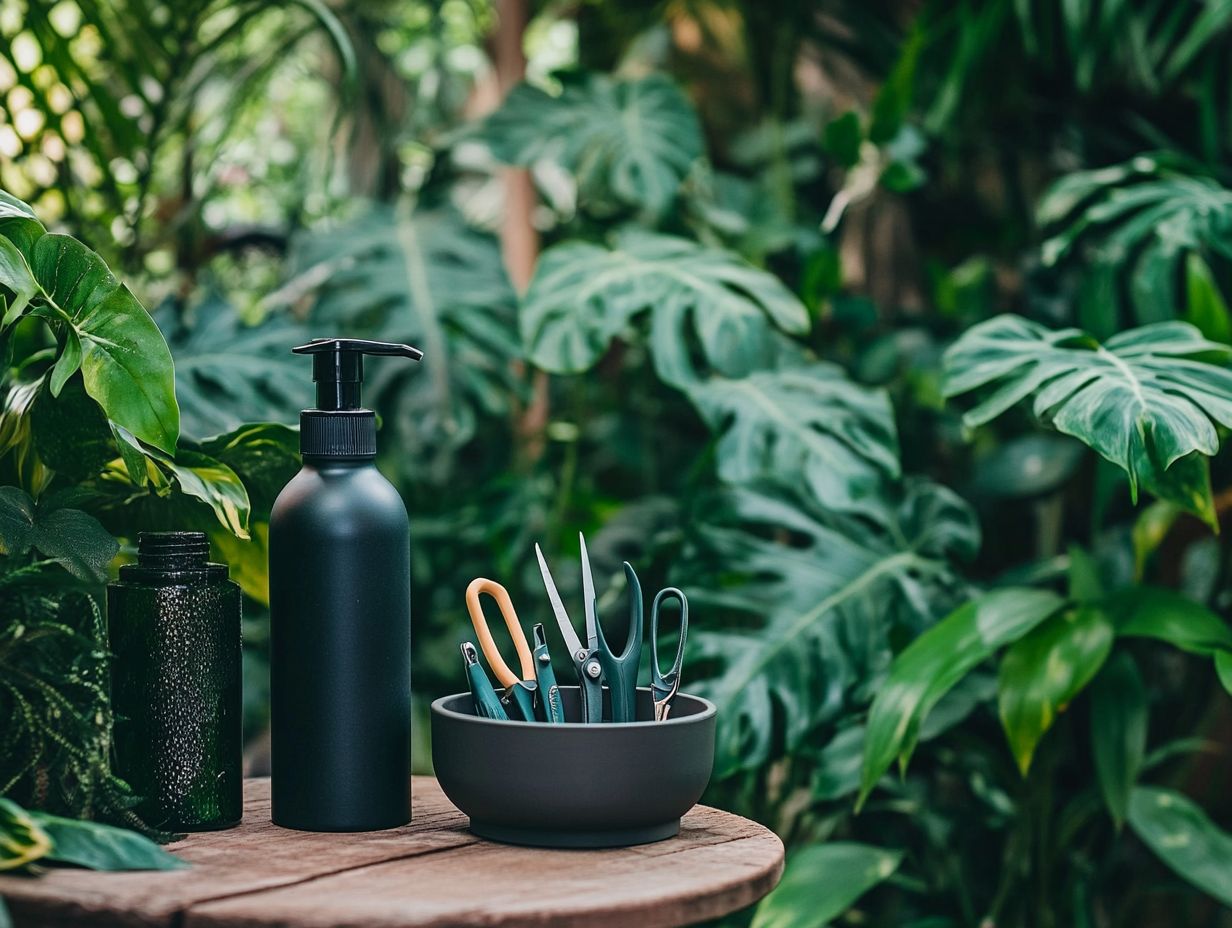
Why is it important to sterilize tools for propagation?
Sterilizing tools prevents diseases, ensuring your plants stay healthy and thrive.
What are some common methods of sterilizing tools for propagation?
Common methods include using alcohol, bleach, boiling water, and specialized sterilizing solutions.
How often should tools be sterilized for propagation?
Tools should be sterilized before and after each use, especially when switching between different plants or varieties.
What tools should be sterilized for propagation?
All tools used in propagation, such as pruning shears, scissors, and other cutting tools, should be sterilized to prevent contamination.
Can using non-sterilized tools harm the propagated plants?
Yes, non-sterilized tools can introduce harmful bacteria, fungi, and viruses, causing your plants to become sick or die.
Are there any benefits to sterilizing tools for propagation other than preventing diseases?
Yes, sterilizing tools promotes faster and healthier growth, eliminating potential sources of stress or damage.

